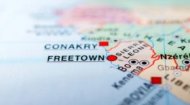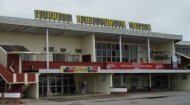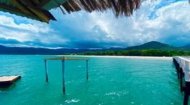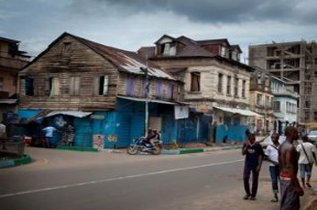|
During that civil war, Freetown became a sanctuary for hundreds of thousands of people fleeing violence in the provinces, causing its population to swell dramatically. This mass influx of internally displaced persons put an immense and lasting strain on the city’s infrastructure, from housing and sanitation to water and electricity - challenges that the city still grapples with today. More brutally, Freetown was the scene of some of the war's most intense fighting, especially during the rebel invasion of 1999 known as "Operation No Living Thing." The physical scars from this period have slowly faded, with rebuilt structures replacing shelled-out buildings. However, the psychological and social impact still runs deep. A generation of Freetonians came of age amidst violence and uncertainty, and the war reshaped the city's social fabric, leaving behind a complex legacy of trauma and survival. |
Freetown Profile |
Freetown Profile |
Freetown Profile | Freetown Profile |
|
|
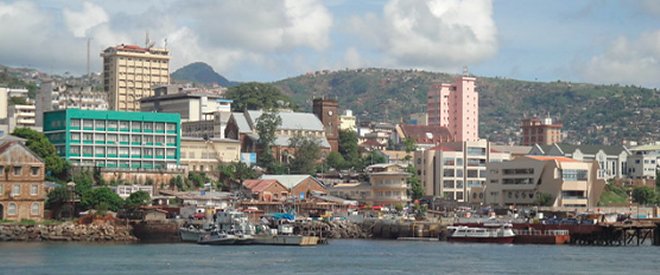
|
Today, Freetown, with its population of 1,387,000 (2025) is the undisputed economic engine of Sierra Leone. Its natural deep-water harbour, the Queen Elizabeth II Quay, is one of the largest in Africa and serves as the country's primary gateway for international trade. It facilitates the export of key resources like diamonds, rutile, and bauxite, and handles the import of essential goods. The city's economy is a blend of the formal and informal. While the central business district is home to banks, government ministries, and telecommunication companies, a significant portion of the population thrives in the informal sector. From skilled artisans and market traders to transportation providers, this vibrant grassroots economy is the lifeblood of daily commerce for many Freetown residents. Daily life in Freetown is a vibrant, sensory experience. The air hums with the energetic sounds of commerce, the calls of street vendors, and the ubiquitous honking of poda-podas (minibuses) and kekes (auto-rickshaws) navigating the bustling streets. The city is a rich tapestry of ethnicities, but the Krio culture remains its defining feature. The Krio language, an English-based creole, is the lingua franca, binding the city’s diverse populations together with its expressive and rhythmic cadence. Community and family are the bedrock of society there. Open-air markets like Lumley Market and the historic Big Market are more than just places of commerce; they are social hubs where news is exchanged, relationships are nurtured, and the pulse of the city can be felt most strongly. The aroma of street food fills the air - from grilled plantains and spicy roasted corn to hearty dishes like cassava leaves and groundnut stew, the local cuisine is a delicious reflection of the nation's agricultural bounty. Freetown's rapid urbanisation and complex history have created significant challenges. Overcrowding is a pressing issue, putting immense strain on housing, sanitation, and public services. Traffic congestion is a daily reality, and ensuring a consistent supply of electricity and clean water to all its residents remains a major hurdle for the government. Youth unemployment is another critical concern, driving social and economic strain. Furthermore, the city's unique geography - squeezed between steep hills and the sea - makes it vulnerable to environmental issues like deforestation, soil erosion, and waste management challenges. The lingering impacts of the civil war and the devastating 2014-2016 Ebola outbreak also continue to affect the healthcare system and social infrastructure. Yet, in the face of these obstacles, local communities, NGOs, and government bodies are actively working on innovative solutions to build a more sustainable and equitable future. If visiting Freetown, take in Sierra Leone's National Museum in Siaka Stevens Street which, although technically is free to enter, a 'donation' is most welcomed (and expected if you want a cheerful guided tour of the museum's two galleries), the main one featuring a collection of cultural and historical artefacts from the area. The National Railway Museum in Cline Street is also worth a look and boasts one of the best collections of railway locomotives, coaches, wagons and historic railway artefacts in Africa. Victoria Amusement Park will appeal to the younger generation which has a number of rides and a large pool to cool off while buildings of interest include St George's Cathedral, completed in 1828, and the Freetown Central Mosque on Wilberforce Street. Also worth a look is the Tambakula Arts and Crafts Centre across the street from Family Kingdom, on the road to Alex's Bar in Freetown. Other places to visit within a reasonable distance from Freetown, include Bunce Island, the site of an 18th century British slave castle, and no visit to Freetown would be complete without seeing the ancient Cotton Tree that stands in the oldest part of Freetown near the Supreme Court building. This tree is believed to be the very place where the Nova Scotian settlers prayed more than two hundreds years ago and is today seen as the symbol of Freetown where Sierra Leonians still pray and make offerings to the ancestors for peace and prosperity. The Freetown Peninsula is famed for its stunning, palm-fringed beaches. Lumley Beach offers a lively, accessible urban beach experience, while a short drive reveals pristine white sands and turquoise waters at River No. 2 Beach and Tokeh Beach, often cited as some of the most beautiful in West Africa. The Tacugama Chimpanzee Sanctuary, nestled in the hills of the Western Area Peninsula National Park, is a world-class conservation centre dedicated to rescuing and rehabilitating orphaned chimpanzees. Hiking to the top of Leicester Peak provides breathtaking panoramic views of the city and the estuary. The video (above) shows Freetown in pictures and images and gives a good feel of the city and life there. |
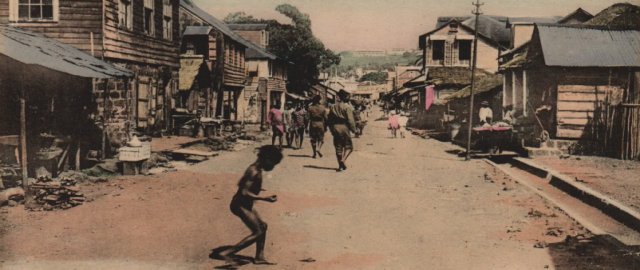
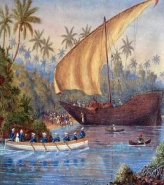 Throughout the 19th century, Freetown became the base for the British Royal Navy's West Africa Squadron (right), tasked with intercepting slave ships. Thousands of "Recaptives" or "Liberated Africans" from across West and Central Africa were freed and settled in Freetown and its surrounding villages. This history imbues the city's landmarks with deep meaning, from the symbolic Cotton Tree that has stood watch for centuries to the Gateway to the Old King's Yard, through which newly freed Africans walked towards a new life. The city's journey through British colonial rule, independence in 1961, and the scars of a brutal civil war (1991-2002) has only added layers to its complex identity.
Throughout the 19th century, Freetown became the base for the British Royal Navy's West Africa Squadron (right), tasked with intercepting slave ships. Thousands of "Recaptives" or "Liberated Africans" from across West and Central Africa were freed and settled in Freetown and its surrounding villages. This history imbues the city's landmarks with deep meaning, from the symbolic Cotton Tree that has stood watch for centuries to the Gateway to the Old King's Yard, through which newly freed Africans walked towards a new life. The city's journey through British colonial rule, independence in 1961, and the scars of a brutal civil war (1991-2002) has only added layers to its complex identity.
